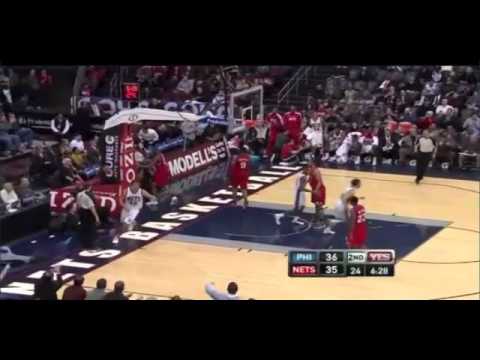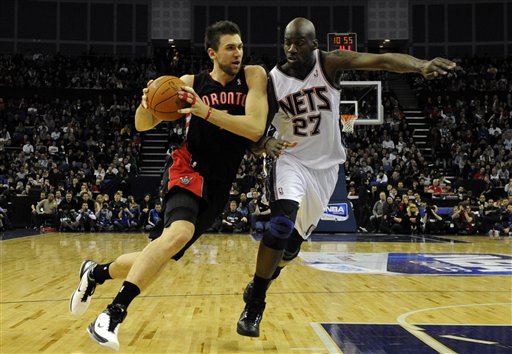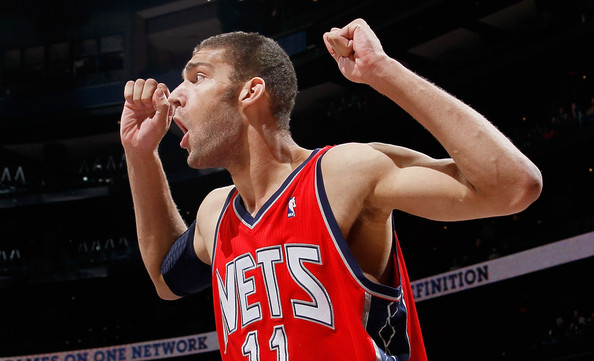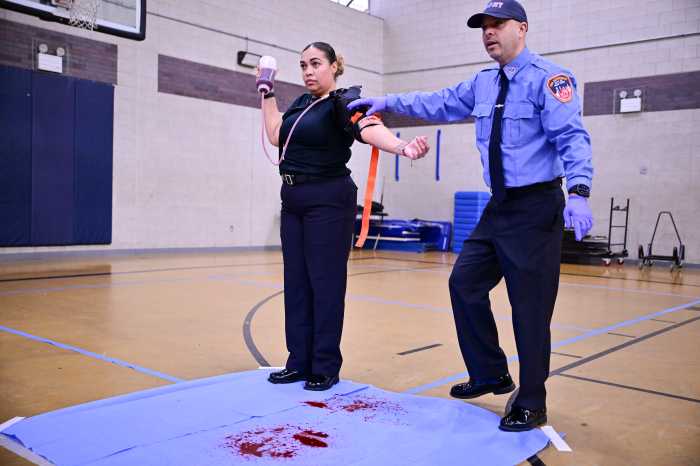Set to Mos Def’s “Mathematics,” uncensored.
To improve in the future, the Nets will have to learn from the mistakes of the past. In this weekly series, Nets are Scorching writers Justin DeFeo and Devin Kharpertian take a look at how the Nets performed in different sets on both sides of the ball during the 2010-11 season.
The Nets were 18th in the NBA in transition this year, but there’s a lot that indicates they’ll improve dramatically in the coming season. If the Nets are able to allocate their minutes well and a couple of players have bounce-back years, the Nets have the pieces to improve dramatically.
What Went Well:
1) Anthony Morrow. Morrow is one of the most efficient transition guards in the NBA, scoring at a rate of 1.37 PPP in transition. His efficiency comes from his practice as a complimentary player in transition opportunities. Rather than handling the ball from end-to-end, Morrow is instead very skilled at slightly trailing the play or sliding out on either wing, and he’s often sneaky enough to do so without attracting defensive attention. He’s an excellent shooter, obviously, but it’s that shooting ability combined with his understanding of transition spacing help make him such a dangerous threat.
Here is an example of Deron Williams finding Morrow twice in their third game together:
The plays are nearly identical. Williams pushes, Morrow sneaks behind the defense on the opposite wing, Williams finds him open, Morrow buries a three. Over half of Morrow’s field goals in transition were three-pointers, and he hit them at a blistering 47.3% clip. This was while playing a lion’s share of his minutes with point guards Devin Harris and Jordan Farmar running the break.
Here are some more Morrow 3’s in transition:
He does a great job of getting to his spots, and, well, it’s just fun to watch a sharpshooter when he’s swishing. Morrow hits those threes that just hit the net perfectly.
2) Kris Humphries. Hump didn’t use a ton of possessions in transition – barely over 1 per 36 minutes. (To compare, superhuman Blake Griffin averaged 2.44 transition possessions/36.) That’s not entirely Hump’s fault, as he often crashed the defensive glass and threw outlet passes in lieu of running ahead. When Hump did run in transition, not only did he provide intro video-worthy highlights, he was also extraordinarily efficient – he scored on nearly 80% of these possessions (often with dunks) and ranked 4th in the NBA in transition PPP.
To understand why, just look at the video above. Not only are the dunks impressive, but he’s able to create the easy buckets in a number of ways. On a couple of occasions, his defense actually creates the break – a good show on a pick & roll or a blocked shot, and before the defense knows it he’s scoring on the other end. It’s not just a bull rush, either, as he even uses a couple of moves here and there to get the ball to the basket. He hustles back at the right time, attacking the basket usually when the defense isn’t ready to react. He’s an athletic player, with a solid vertical leaps and arms like the Hulk.
(That still does not make “The Incredible Hump” an acceptable nickname. Just saying.)
As mentioned, Humphries scored at a remarkably high rate. With Deron Williams, you wouldn’t expect his production to get worse. I’m not saying re-signing him is a must, though; ideally he’d be next to someone who also crashes the glass, giving him more leeway in running out when he’s out of position for a rebound. The Nets don’t have someone who does that.
Truth be told, the Nets got their best offense on the run when they were able to feed their second or third options. This could be spot-up shooters or bigs that run ahead looking for easy dunks. It just so happens that they do have two of the best players in the NBA in these departments.
So What Went Wrong?
1) Complementary Reserves. Despite Morrow and Humphries contributing well, the Nets (perhaps not by choice) wasted other possessions on inefficient players. The two big culprits in this race are Travis Outlaw and Stephen Graham, who bungled Nets fast breaks in different yet equally painful ways.
Outlaw was Mr. Misfire – despite the fact that most NBA players make a high percentage of their shots on the break, Outlaw found a way to buck that trend. He shot under 50% from the field and a pitiful 5-25 from beyond the arc. While there were a few instances of Outlaw shooting out of rhythm, for the most part his threes in the fast break were open and squared to the basket. Missing wide open shots at the very least means you’re getting open shots. I’d like to think that Outlaw just had an off-year, as he’s proven that he’s a better shooter in the past. I suppose we’ll see next year. As a slasher, though, Outlaw didn’t show much lift and wasn’t particularly strong towards the basket.
I did write a little something on Stephen Graham, but in the spirit of understanding that the Nets will almost assuredly release him, I decided there was no need to critique his performance.
2) Spacing & athleticism. Too often, the Nets were literally slowed down in transition by a lack of speed. While a special player like Morrow is able to use his average speed wisely for spacing out and knocking down threes, much of the rest of the transition was bogged down by players not running ahead to make the defense react.
Some players are excused from this, like Humphries. But this is another place that I think Brook Lopez’s lack of speed hurts the team. He is an excellent offensive player when he has the energy to make the sprint while others may merely be jogging, but his conditioning needs to improve if it could mean an advantage on the floor.
Additionally: Lopez gets a semi-pass for his overall transition approach. Lopez often (annoyingly) played in the midrange area on offense, which gave him more opportunities to leak out in transition than a guy like Hump. However, even though he had those opportunities, Lopez was both less efficient and less prolific (per 36 minutes) in the transition game than Humphries.
Why the semi-pass? Because Humphries was absolutely phenomenal in transition, and Lopez was merely “very effective.” When catching the ball ahead of the pack, Lopez showed a great touch around the basket. He was able to make moves and knock down tough shots even while changing speeds. That said, I would like to see him either commit more to the post or the transition game next year.
Of course, that also depends on who’s next to him on offense.
Honorable Mention: Point guard decision-making. With the revolving door of point guards, the players spent a limited amount of game time with the rest of the rotation. This resulted in “tunnel vision” plays and forced transitions when the defense would dictate a half-court offense. The reason this only gets an honorable mention is that with luck, that issue won’t be a persistent one. With the point guard situation much more settled for next season – a healthy Deron Williams is waiting in the wings – the Nets should have a lot of these problems fixed.
Looking Ahead: How Deron Affects The Break
The Nets ran out in transition 10.4% of the time this past year. To compare, the best transition team in the NBA – Miami – made plays in transition 12.6% of the time. In his time in Utah this season, almost 20% of Deron’s logged plays were on the break, so you can expect the Nets will be running a lot.
The question is more just who will be running; that is to say, what pieces will be back next season? Brook is all but a lock. Morrow will likely be around. Petro and Outlaw are probably in, though not by choice. Farmar could prove expendable. Hump is a major question mark. Vujacic and Brandan Wright have an outside shot.
Deron & Morrow make the perfect pair on the break. Morrow has made a career on hitting spot-up threes, and Williams can understand the space on the floor and give him the pass at the right time. This is one area that I really think the Nets will be great in next year – if Morrow is spacing out transitions for Williams, someone is going to get a good look at the basket.
Lopez is great when motivated, and Deron Williams might be able to motivate him. To be fair, Deron could also yell at him more than Avery did and destroy their relationship. I doubt that’ll happen, just noting. A Lopez not bothered by mono and calcium deposits on his elbow could be radically different from the one we saw this past year.
With Outlaw, you hope he can reverse his trend. You may not remember, but he did start this past season on fire from beyond the arc – making 21 of 37 attempts from deep in the first ten games. He soon fell off, for whatever reason – his conditioning and health are two oft-cited potential reasons. Or, maybe the entire year after those first ten games was just a stretch of bad luck.
If Farmar comes back, I think his impact will be limited solely because his minutes will be limited. That’ll be a good thing. He’s best if he’s doing the Nate Robinson thing and surprising defenses for a few possessions every quarter. Wright could be a poor man’s Favors: he’s got a fraction of Favors’s upside, but he is at least a body with a little spring who can get out on the break. With Petro, you do what you can.
With some stability, I think the fast break is a place the Nets will improve by leaps and bounds in next year, and Deron Williams is the primary reason. While Deron’s injured wrist hurt his transition game after the trade, he’s definitely skilled enough to create opportunities for everyone on the break. The Nets also have two players who were among the best in the NBA at scoring in transition – Anthony Morrow and Kris Humphries. Both of these guys excelled off the ball, so to have someone who can maintain the ballhandling duties is key. Deron can dominate by creating for himself and by setting up others, and that only makes next year’s team more exciting.

















